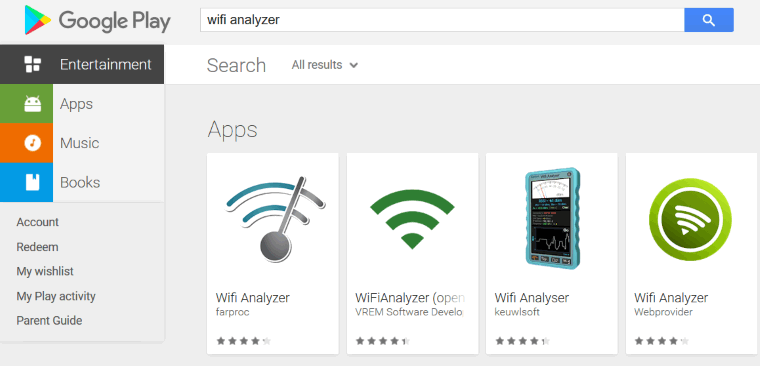How to Double Your Wi-Fi Network’s Range
Everyone agrees that Wi-Fi networks provide two key “benefits”: convenience and signal loss. But what if I told you that you can get rid of all your Wi-Fi problems for good, and do it in less than one hour, for a measly 50 bucks?
Yes, the solution is that simple, and it involves buying and adding a second router to your home network. And it makes sense to do that, for a significant number of reasons.
First of all, it allows you to get rid of all the dead Wi-Fi spots in your home. Then, it helps you connect a wired device, which may be too far away from your router, to the Internet. Finally, it gives you the option of creating a totally different network, allowing you to separate the devices that require big download/upload speeds from the ones that aren’t bandwidth intensive.
So, let’s see how it’s done, shall we?
Begin by setting up the new router. Place it close to a computer, and then connect to it using a standard LAN cable.

Then, follow the instructions in the router manual to finish the setup process.
You can also connect the second router to the first one using an Ethernet cable, of course. The folks at DA recommend setting up the new router in client mode, in case that you go this route. So, check the router manual first, to ensure that your router supports “client mode”.
Log into your old router, and then write down its Wi-Fi channel. You will have to set a different channel for the second router; otherwise, their signals will interfere, and your Wi-Fi network will slow down to a crawl. There are several Wi-Fi apps that can tell you the router broadcasts channel, in case that you run into trouble. Just search for Wi-Fi analyzer in the Google Play store and you will find several mobile applications that can do the job.

You can also set up the second router in a way that makes it create a subnetwork. This way, you can assign certain privileges or restrictions to the devices which access the subnetwork that’s part of your home network.
Another option is to set up the second router as an access point. By doing this, you will simply extend the Wi-Fi signal range in your home, making it easier for the devices that are away from the first router to get access to the Internet, or maybe to a Wi-Fi printer that’s shared over the local network.
To do this, log into your router’s admin page, and then choose the option that turns it into either a bridge or a repeater for the signal that’s received from the first router. Each router has a different admin menu, so I’m afraid that I can’t be too specific. You will find all the needed information in the router manual, though.
It is crucial to make sure that the IP address of the new router is within the Wi-Fi network’s address range. You don’t want the new router to operate using another IP address range, or conflict with other devices that are connected to your local network.

Be sure to place the second router close enough to the first one. Too many people make the mistake of adding their Wi-Fi signal repeater in the areas that lack a strong network signal. And if you do this, the router will be unable to pick up a clean signal, amplify it, and then distribute it.
For best results, your new router should be placed 15…20 feet away from to the old one; this way, it can pick up a strong signal, amplify it, and then rebroadcast it to the devices that are away from the first router. Also, make sure to use the 2.4 GHz band; it provides a much longer range in comparison with the 5 GHz band.
New Apps, Kids Sites and Liquid Metals
Super Mario Run Hits the Jackpot
Nintendo knows a thing or two when it comes to gaming – that’s for sure. Most of us couldn’t go to sleep before playing at least a Super Mario level, after all. And now that Super Mario Run, the company’s first mobile game, is out – sadly, only on iTunes so far – Nintendo is talking sales and expectations.
According to them, Super Mario Run has brought in over 50 million dollars in revenue since its December 2016 launch. The game was downloaded by about 80 million people, and close to 5 million of them have paid $10 to unlock all the levels.

It’s an impressive performance, even though Nintendo expected to gain more money out of this game. Mario is a very well-established brand, after all, and several obscure game development companies manage to make much more money in a year by creating innovative games and polishing them to perfection.
Still, Mario will soon hit the Google Play store, and it could make a big difference there. In fact, I am pretty sure that the number of sales will be bigger in the Android marketplace!
No matter what happens, the future looks bright for Nintendo, which is in the process of porting several of its successful games – Animal Crossing, for example - to mobile devices.
Yale Invents a New Metal. A Liquid Metal!
Have you heard about Jules Verne? It’s a French author, who was born about 200 years ago, and he has written dozens of interesting books – many of them belonging to the science fiction genre. And one of his most famous books is titled Journey to the Centre of the Earth.
In this book, a highly-regarded professor named Lidenbrock acquires, and then manages to decrypt, a 12th century old manuscript, which talks about a secret passage - accessible from a volcano crater - which leads to the center of the Earth.

I won’t go further with the story, because I want you to read and fully enjoy this great book. It’s true that reaching the center of the Earth is still considered to be an impossible task, at least for now, but several researchers from Yale University plan to recreate the hot Earth nucleus in the lab, with the goal of studying it. If we can’t go there, at least let us bring a replica of the center of the Planet in the lab!
The team has created a liquid metal material, a substance made out of particles which are suspended in an indium/gallium alloy. This material is similar with the liquid metal that is present around the solid Earth core.
The Yale metal can also generate a strong magnetic field, which is five times more powerful than any other known liquid metal. By making use of it, scientists will (hopefully) be able to create analysis models for the cores of stars and planets.
According to the researchers, the new liquid metal will also help them study the magnetic pole reversal phenomenon. If this ever happens, Earth’s south and north poles will flip, and the magnetic field will stop working, leaving the Earth exposed to deadly radiations. Scientists believe that an event like this would lead to mass extinction.
By using the invented material, the researchers will build a very small Earth replica, and then study the potential geomagnetic flips.
Good bye, Club Penguin! Hello, Club Penguin Island!
Did you know that Disney used to own a social networking website named Club Penguin? As you can guess, its main users were kids. And now, after over 10 years of activity, Club Penguin will be shut down. Don’t be sad if your kid loves Disney’s world, though; the site will soon be relaunched as a smartphone application, and with a new name: Club Penguin Island!
According to Disney, the app will offer new features, along with several engaging quests. The company is already allowing preregistrations, so now it’s the best time to secure that perfect “teddybear643” user name for your kid.

“But why this change?” you may ask. First of all, I’d say that an app is much easier to update and maintain. It looks like there’s another reason for the change, though, and it’s a serious one: website traffic decline.
According to TechCrunch, the number of visitors has decreased by 50% during the last 3 years. And lots of kids own a phone these days, so they’re more likely to access an app, rather than log into a website - often times under the supervision of an adult. It will be interesting to see who manages to attract more users, because several big companies – including Lego – are building their own kid-friendly social networks.


